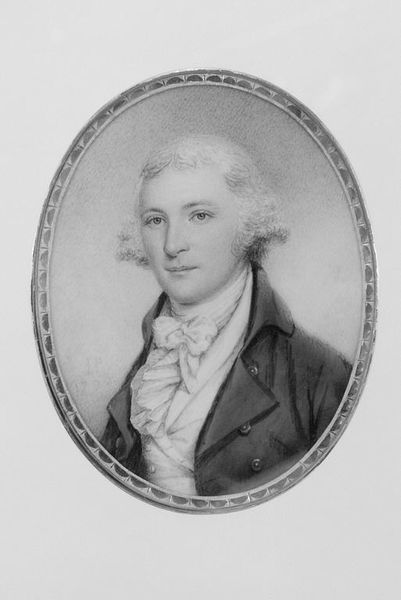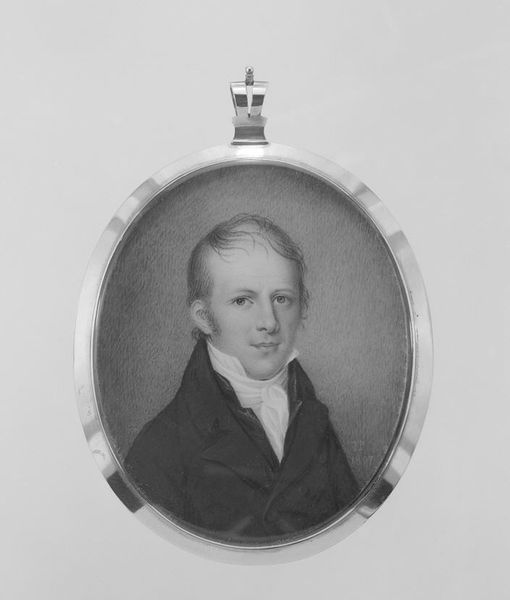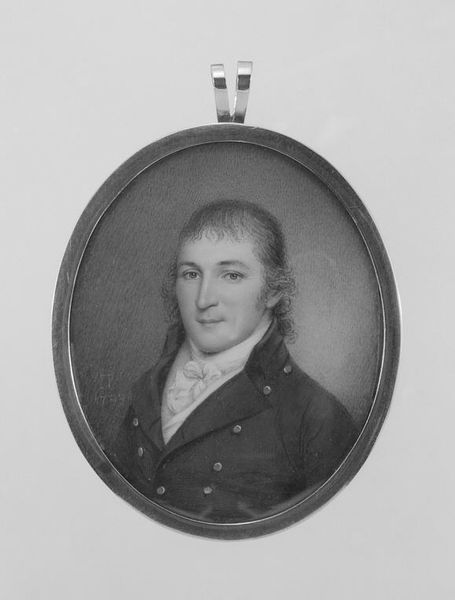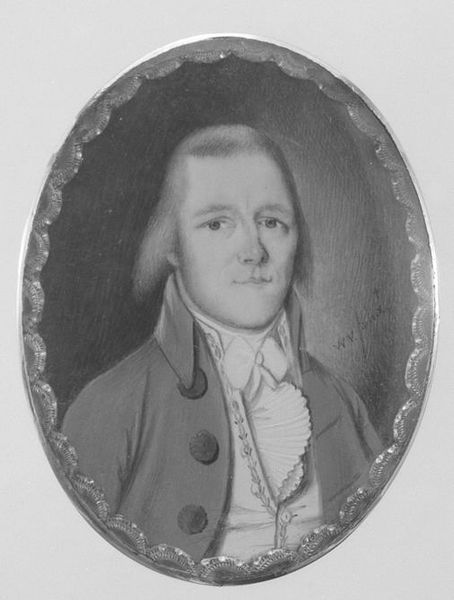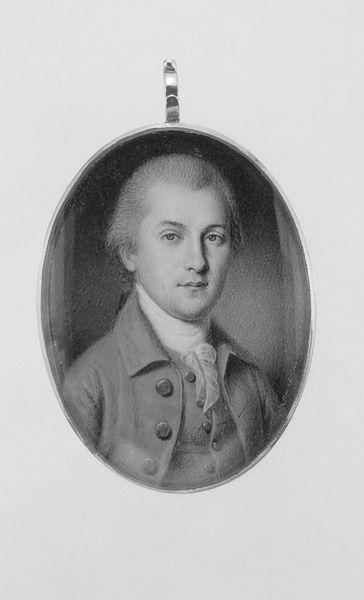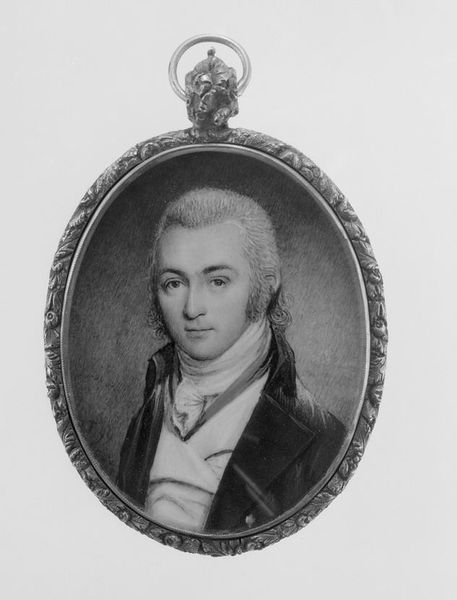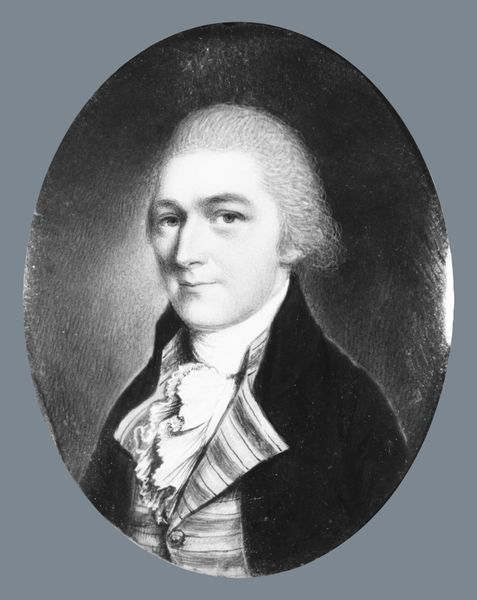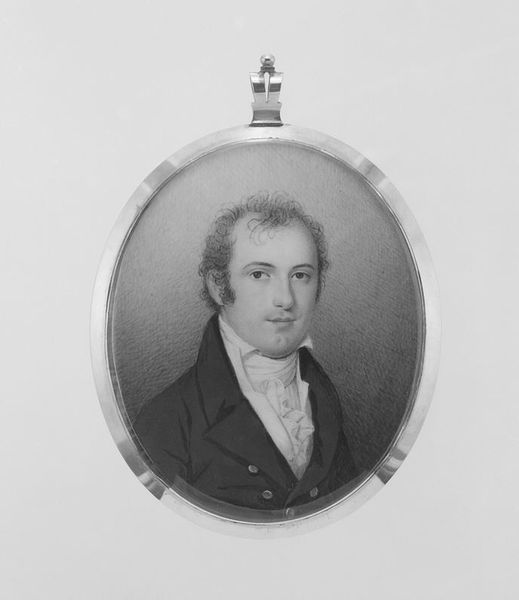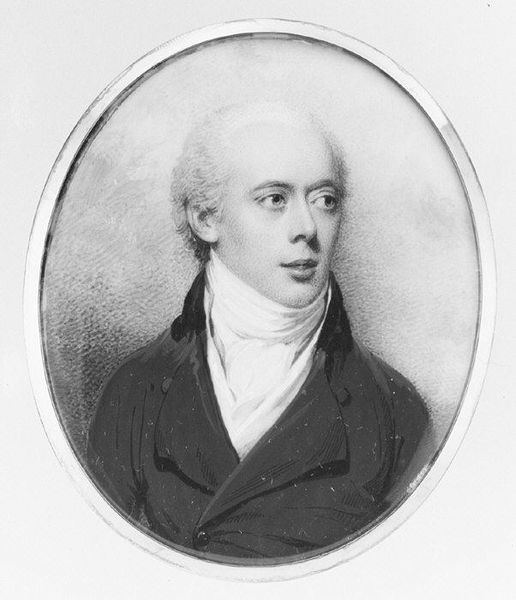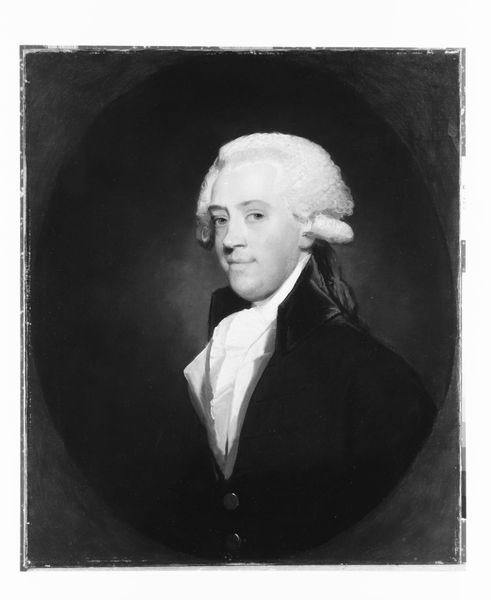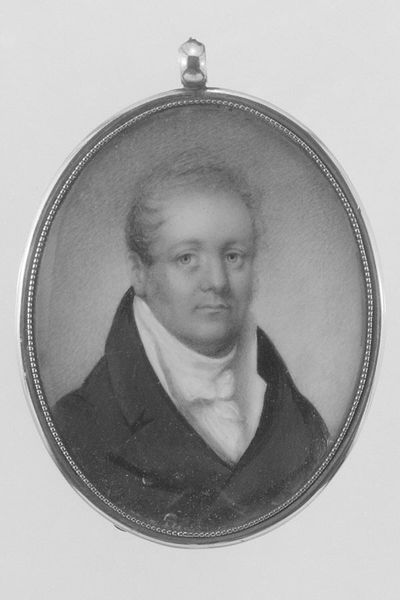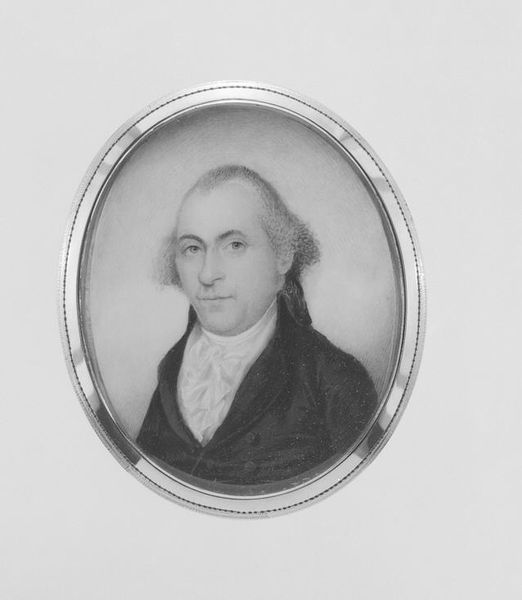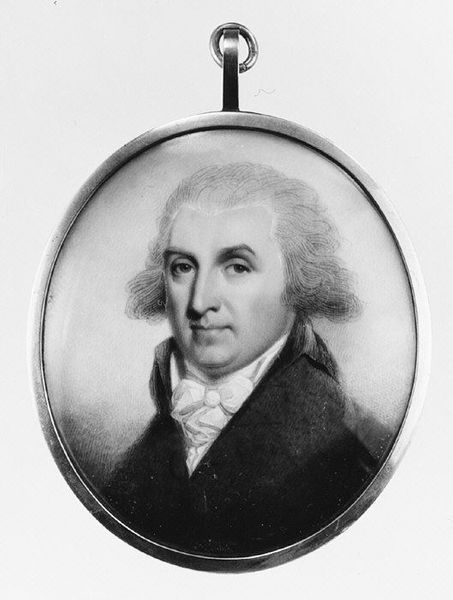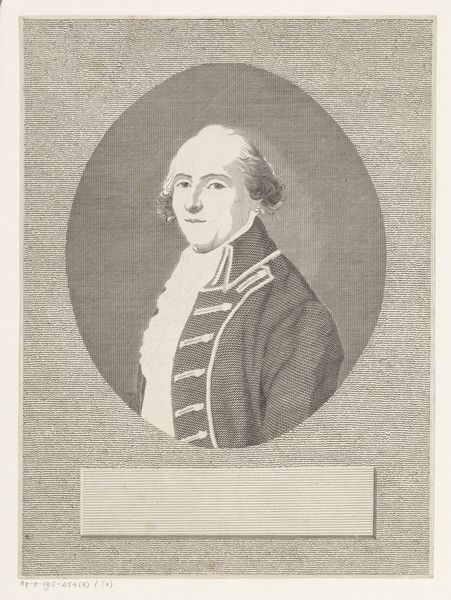
drawing, pencil
#
portrait
#
drawing
#
self-portrait
#
pencil
#
realism
Dimensions: 2 7/8 x 2 3/16 in. (7.2 x 5.5 cm)
Copyright: Public Domain
Curator: Let's turn our attention to this compelling self-portrait, identified as L. B. Walker, crafted sometime between 1752 and 1828 by Edward Miles. It's a pencil drawing and renders its subject in a very classical portraiture style. What strikes you immediately about this work? Editor: There's a quiet resolve emanating from this portrait. The monochrome palette lends it a timeless quality, while the meticulous shading hints at a certain precision and perhaps a touch of stoicism. One could almost hear echoes of 18th-century social restraints in the picture. Curator: It's interesting you mention restraint. Portraits of this era, especially self-portraits, operated as carefully constructed statements. Walker, likely very aware of societal expectations, has presented himself with a certain degree of formality. This was before the advent of photography, so drawings had an immediate symbolic power when thinking of image and self. Editor: Indeed, in that context, what resonates most is the power dynamic at play. He has control over the narrative—choosing how to present himself, aware that his class and status are inseparable from the image he conveys. His steady gaze perhaps confronts a world steeped in rigid societal structures. I wonder about the tensions present: both social pressures and expectations. Curator: Those tensions certainly fueled self-expression in this period, manifesting subtly in posture and dress. He’s opted for an oval format, which was a conscious choice, and we see this specific approach quite commonly as symbols of permanence. And consider the use of pencil as a medium - it democratizes art production since these materials are less costly and far more available than paint. Editor: Yes, though despite a readily available medium, access still differed among social classes, informing what art and creativity became accessible and viewed by the masses. It serves as an interesting commentary on gender, identity, and how the act of drawing itself allowed Miles a form of agency, both self-portraying as the individual Walker, but as the draughtsman himself. Curator: So, beyond the immediate image, you see layers of power and identity negotiating the conventions of 18th-century society? The nuances within portraiture can be compellingly expressive. Editor: Absolutely. Art, even in its quietest form, holds the potential to reflect profound cultural and individual stories and it makes you really start to consider identity then and now. Curator: A fitting thought with which to leave this insightful representation.
Comments
No comments
Be the first to comment and join the conversation on the ultimate creative platform.
